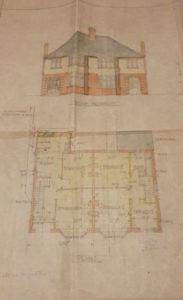Good morning everybody!
Here are your tasks for today:
Maths
Mental Maths Challenge: 8x tables
Have a go at the game attached here Topmarks 8x tables game You will need to select the Times Tables Button, then select x8 questions. Let me know how you get on!
Maths No Problem: Textbook 5B Chapter 10 Position and Movement
Lesson 4: Describing movements
In Focus: Have a look at the task on page 137. Prompt your child’s thinking with questions such as: It says that the triangle is ‘reflected’; what does ‘reflected’ mean? What are mirror lines? Where are they situated? Tell them that when a shape is reflected across a mirror line it creates a mirror image. What does that mean? How would the shape change? What would stay the same? What can we measure to make sure the reflection of each of the vertices is in the correct place? Guide children towards measuring the distance from one of the vertices to the mirror line and then drawing a dot at the same point on the other side of the mirror line. Will this need to be done for all of the points? Once all points are complete what will we need to do?
Let’s Learn: Follow the images and guidance in Let’s Learn to check your reflections.
Guided Practice: During Guided Practice, pupils are completing two separate reflections for a triangle and a reflection for an irregular quadrilateral shape. They will need to measure the distance from each of the vertices to the mirror line accurately and then record the same points on the other side of the mirror line. Finally, they will need to connect the points to complete the reflection of the shapes.
Workbook: Please complete worksheet 4, pages 84 and 85.
English
Reading: Your child should try to read for at least 20 minutes every day. Remember to log on to Accelerated Reader and complete quizzes for all the books you have read!
If you have a Lexia account, try to log on and complete at least 15 minutes a day.
Writing:
Revisit our story, The Game, and retell it using your storymap. See if a member of your family can join in with the retelling!
Today we are going to revisit and remind ourselves about relative clauses. Follow this link to watch the BBC bitesize video about relative clauses and have a go at the activity underneath it.
So relative clauses give more information about somebody or something in a sentence. They begin with a relative pronoun like; which/who/whose/that.
Let’s add some relative clauses into sentences which could be used in our story. We’re going to drop a relative clause into sentences using the relative pronoun ‘who’.
For example: Mrs Allbright was marking books.
Mrs Allbright, who was tired and cross, was marking books.
Notice how the relative clause is separated by commas before and after it!
Have a go at ‘dropping in’ a relative clause into the sentences below using ‘who’:
1. Danny, who__________________, was looking out of the window.
2. Susie, who__________________, ran to the door with the box.
3. Freya, who__________________, watched The Voice on the iPad.
Now have a go at dropping a relative clause into the sentences below using ‘which’.
For example: The desks were covered in board games.
The desks, which were bright blue, were covered in board games.
4. The board game, which____________________, intrigued Susie.
5. The netball court, which____________________, looked slippery.
6. The dominoes, which____________________, were in the basket.
Now create some of your own sentences about the story including relative clauses using the pronouns ‘whose’ and ‘that’.
Topic: History
Over the next few weeks, I would like us to undertake a History Project into our home town of Weymouth. I think it is a lovely opportunity to learn a little bit about our local past which has helped to shape the town we live in today. And you’ll be suprised, the history of Weymouth and Melcombe Regis has more to offer than you may think!
I thought it would be great to start with the history of our own homes, so your task for this week is to find out anything you can about the history of the house where you live.
You could ask your parents, relatives or neighbours for anything they may know, any tales or stories they have heard or any documents they may have. I am lucky enough to have been passed the original architects drawings for my house:

You could search online for any local history pages which may have photographs of your road. If you live in a new estate, could you find anything about the land use before the house was built?
I have googled Southill Weymouth History and found some Francis Frith old map images of Southill and Radipole which are interesting to view.
It would be lovely to hear about anything you may find out, no matter how big or small!



